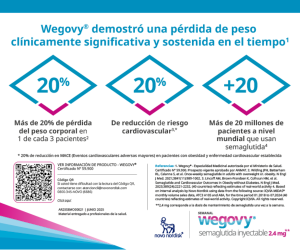Importance of women's health in Latin America (Uruguay)
Keywords:
health, women, diabetes, UruguayAbstract
Uruguay has 3,444,263 inhabitants according to the latest 2023 census. Women represent 52% of the population, with a life expectancy at birth of 81.6 years. The female population is higher in Montevideo as well as in the interior regions (53.4% and 51%, respectively).
The ratio of women over 60 years old to their male counterparts is 1.5. The feminization of old age increases with advancing age.
According to 2023 data, there is a higher poverty rate in female-headed households and difficulties accessing employment. Women spend more time on household chores and caring for children and the elderly. 61.4% of the total work burden for women corresponds to unpaid work.
The National Integrated Health System provides universal health coverage. Women of all ages can receive care from either public or private providers. In the public sector, care is free at all three levels, including glucose meters, treatments such as insulin, and special requests for insulin analogs and iSGLT2 inhibitors. The National Fund for Resources is responsible for covering high-cost treatments for the entire population.
The main causes of morbidity and mortality among women are cardiovascular diseases, followed by cancer (breast, colorectal, and lung) and respiratory diseases. Non-communicable diseases (NCDs) predominate as a cause of morbidity, with a higher prevalence of diabetes in women from the age of 25.
Uruguay has a robust legal framework for protecting women's rights and promoting gender equality, including the Law on Equal Opportunities and Rights, the Comprehensive Protection of Women Against Violence Law, the Sexual and Reproductive Health Law, the Voluntary Termination of Pregnancy Law, and the Assisted Reproduction Law. Additionally, there are Public Health Programs that address maternal and child health, the prevention of non-communicable diseases, mental health, and the prevention of gender-based violence.
Despite these efforts, there are still challenges and opportunities to address, such as strengthening health programs and improving access to innovative technologies and medications.
References
I. Instituto Nacional de Estadística (INE). Anuario estadístico, 2023. Disponible en: https://www.ine.gub.uy/anuario-estadístico-2023
II. Ministerio de Economía y Finanzas. Políticas sociales. MEF 2022. Disponible en: https://www.gub.uy/ministerio-economia-finanzas/comunicacion/publicaciones/exposicion-motivos-rc-2022/6-politicas-sociales/66-genero
III. Ley 18.211 del Sistema Nacional Integrado de Salud. 2007. Disponible en: https://www.impo.com.uy/bases/leyes/18211-2007
IV. Ministerio de Salud Pública (MSP). Morbilidad por enfermedades no transmisibles en Uruguay 2019. Disponible en: (https://www.gub.uy/ministerio-salud-publica/comunicacion/publicaciones/morbilidad-enfermedades-transmisibles-uruguay-diciembre-2019).
Downloads
Published
Issue
Section
License
Copyright (c) 2024 on behalf of the authors. Reproduction rights: Argentine Society of Diabetes

This work is licensed under a Creative Commons Attribution-NonCommercial-NoDerivatives 4.0 International License.
Dirección Nacional de Derecho de Autor, Exp. N° 5.333.129. Instituto Nacional de la Propiedad Industrial, Marca «Revista de la Sociedad Argentina de Diabetes - Asociación Civil» N° de concesión 2.605.405 y N° de disposición 1.404/13.
La Revista de la SAD está licenciada bajo Licencia Creative Commons Atribución – No Comercial – Sin Obra Derivada 4.0 Internacional.
Por otra parte, la Revista SAD permite que los autores mantengan los derechos de autor sin restricciones.




























